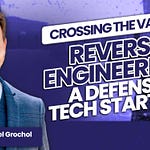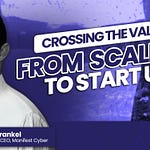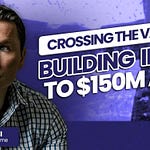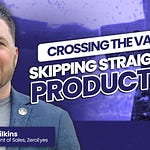Overview
CFD Research is a small business founded in 1987 in the Singhal family garage in Huntsville, Alabama.
Dr. Ashok Singhal and Sangeeta Singhal moved from the United Kingdom to Alabama in 1978 to open the US branch of a UK-based engineering firm. Ashok had his PhD in Mechanical Engineering from Imperial College in London, and Sangeeta was an accountant.
The Singhal family chose Huntsville due to the proximity to NASA, and 9 years after moving to Huntsville, Ashok decided to branch out on his own and start CFD Research with his wife’s help. The first large contract that CFD Research won was the Challenger Solid Rocket Booster re-design.
The company was a family affair from the beginning, with young Sameer printing a “CFD Research” sign that still hangs in his office today, and Sangeeta typing out proposals.
To hear Ashok tell it, “In the beginning, we were very poor. We had one idea and one IBM clone computer that cost $1000. We could have used hundreds of computers, but we couldn’t afford them.”
The CFD in the name stands for “Computational Fluid Dynamics,” and while the company initially focused on rockets, today they work on everything from heart valves to cybersecurity. And today, Ashok’s son Sameer has taken the reins. Despite starting as a lower level employee, Sameer worked his way into the C-Suite over the better part of a decade, and has grown the company to over 250 employees, and more than $100M in Small Business Innovation Research Funding. Through it all, the company retains a top 20% rating in the DoD’s Commercialization Achievement Index and has over 85 patents.
Over the last few years, the family business transitioned to an Employee Stock Ownership Plan (ESOP), and today is proud to be 100% employee-owned.
Company: 254 employees: 70% with advanced degrees, 35% have PhDs, 40% have security clearances. 100% employee-owned.
Business Model:
CFD is fundamentally a research organization: they develop new technologies, and then they commercialize them in four main ways:
Forward-Deployed Services: CFD puts engineers in customer environments to conduct day to day work and help customers achieve their missions.
Licensing: the company has over 85 patents, and will often license the rights to technologies they develop. In this model, a larger company gains the ability to use the CFD-developed technology in exchange for a royalty payment (see: battery case below).
Spinouts: for some dual-use technologies, CFD allows employees to go through an internal “innovation accelerator.” Based on Steve Blank’s “lean startup” process, the intrapreneurs use the business model canvas to conduct customer discovery and refine a business plan for starting a new company with technology developed in-house at CFD. The company puts on a mini shark tank-style event, with external judges from local accelerators and the entrepreneurial community, with winning teams awarded $100K to conduct customer interviews, flesh out an MVP offering, develop a pitch deck, and raise capital externally. If the founders are successful in doing so, they are able to spin out and start their own firm.
In-house commercialization: in some circumstances, where CFD has the internal bandwidth to produce a product or offering at scale, they will commercialize themselves. In this case, the product is brought to market in house, and CFD may prime a contract award with the government, or sell into a commercial market. (see: hypersonics example)
While there are some principles to choosing one path or another, Sameer shares that this is really more art than science. Each situation is different; each circumstance is context-dependent.
A Tale of Two Transitions
Sameer shared two particular stories of compelling capabilities CFD transitioned from the lab to production: thermal batteries, and ground testing for hypersonic capabilities. Both are in production in the defense market (albeit through different channels), and both originated as SBIR grants:
Thermal Batteries
Ground Test for Hypersonics
Thermal Batteries: Thermal batteries are batteries for missile systems. These are extremely specialized devices with a niche national security use. The challenge for a missile is that it might sit in the ground for 20 years but require full capacity at launch, so it can’t self-discharge like a commercial battery. In this case, you want to melt an electrolyte when you want to turn on the battery which causes the missile to fire.
CFD began researching these batteries in 2012 through an Army SBIR grant. But once it was tested and validated, rather than bring it to market themselves, Sameer and team licensed it to EaglePicher, the largest manufacturer of thermal batteries, in 2018. In turn, EaglePicher sells it to the Big 5 defense primes.
The decision to license came out of recognition that it was a consolidated market (only a few customers), with entrenched suppliers, who would be needed to integrate the batteries into a broader solution regardless. Manufacturing the batteries at scale was also a very different technical challenge than manufacturing a few of them (dry room build-outs are expensive), so capital expenditure combined with a small customer base pointed them in a different direction. Interestingly, Sameer met the person who would eventually license this technology at a conference! They sketched out the bones of the deal literally on a napkin, and even 15-20 meetings later, those original principles largely held.
Ground Test for Hypersonics: This is another example of a SBIR grant that scaled beyond the company’s walls: wind tunnels for testing hypersonics on the grounds in Tullahoma, TN at Arnold Engineering Development Center.
The CFD team was able to fix a combustion instability that, once remedied, allowed the government to test all the way from Mach 2 to Mach 7 speeds. This earned CFD a follow-on contract to deliver hundreds more of these specialized injectors that improved testing capability and operations at government test sites. Even more exciting is this work opened up new doors for the company, in the form of work with the Space and Missile Defense Command in Huntsville, to develop a new way of generating hot air that makes testing even more realistic. CFD has received over a hundred million dollars in follow-on funding to develop a set of state of the art testing facilities that dramatically expand the range of possibilities that the government can test and evaluate in the hypersonic domain on the ground.
If you’re interested in learning more about the program, see here.
Lessons
Conferences Work! Even as the head of a successful small business, Sameer mentioned that in developing commercialization partnerships, “most connections were made at conferences.” It’s a matchmaking game. It still took a ton of time (sometimes 15-20 meetings with a company) and the tenacity to stay top of mind and top of inbox, but it all started face to face.
Make the first move. Don’t play coy! “Bigger companies are looking for someone to give them a proposal.” If you wait to make the first move because you think they are bigger and have all the power, you’re going to be waiting a long time.
The principals - not the lawyers - agree to terms. “If you can agree on a term sheet before you get the lawyers involved, your life is much easier.” Ultimately, the deal Sameer signed with the prime very much resembled the deal he scribbled on a napkin at a conference.
Mission first: One of the more remarkable elements of the CFD approach is the way the team is able to sniff out new opportunities. CFD’s commitment to getting technology in operation means that they’re really not wedded to any particular business model. They’re not tethered to “SaaS” or “PaaS” - they are focused on developing great tech and then finding a path to market.
Customer Discovery: Sameer described a vintage Steve Blank moment, as he discussed a SBIR topic that was designed to look at the “negative” side of a battery. Halfway through, the team pivoted to the positive side, realizing that the customer’s specification was limiting the potential solution set. Likewise, the hypersonic testing program was meant to look at laser ignition, but the team discovered greater return looking at the combustion air heater.
Flexibility: this is a people business, and Sameer himself moved from metals to semiconductors to electric engineering work even after graduation.
Additional Contracts:
GSA OASIS: OASIS, OASIS Small Business (SB), and OASIS 8(a) are family of governmentwide multiple award, IDIQ contracts that provide flexible and innovative solutions for complex professional services
EXPRESS: Blanket Purchase Agreement (BPA) as a small business prime for the Expedited Professional and Engineering Support Services (EXPRESS) Program Technical Domain for non-R&D Engineering Service
Prime on Eglin Wide Agile Acquisition Contract (EWAAC)
NASA Vertical Lift Technology Development (VLTD) program at Ames Research Center (ARC)
Professional Engineering Services Schedule 871 Contract, also referred to as the PES Schedule
Consortium: member of 8+ consortiums
Others: https://www.cfd-research.com/contracts/
For more:
On CFD Research: www.cfd-reserach.com
On Sameer Singhal: https://www.linkedin.com/in/sameer-singhal-304b6018/
Crossing the Valley: https://www.youtube.com/@FrontdoorDefense













Ep. 05: Growing CFD Research from the Garage to a $75M Business